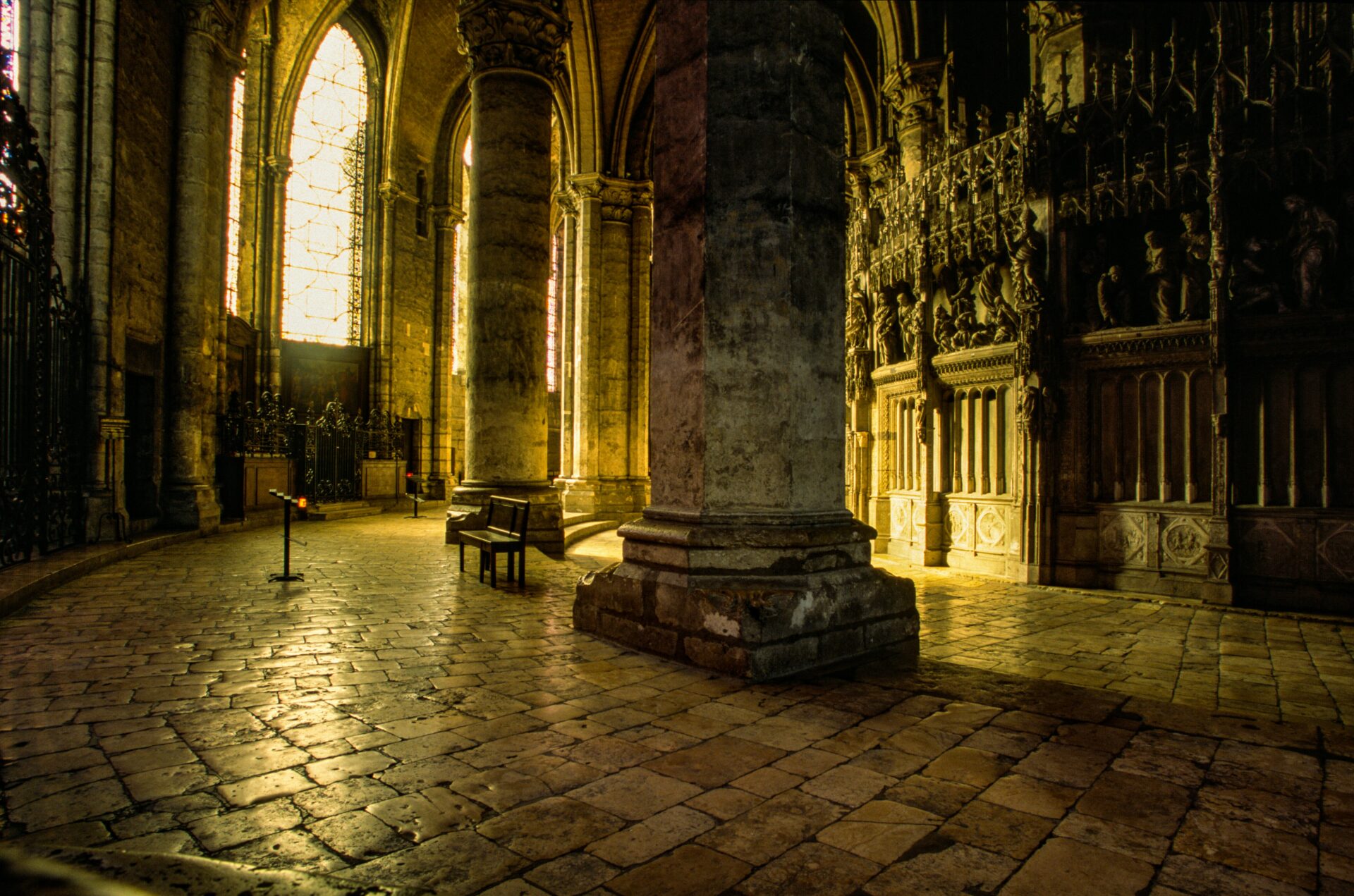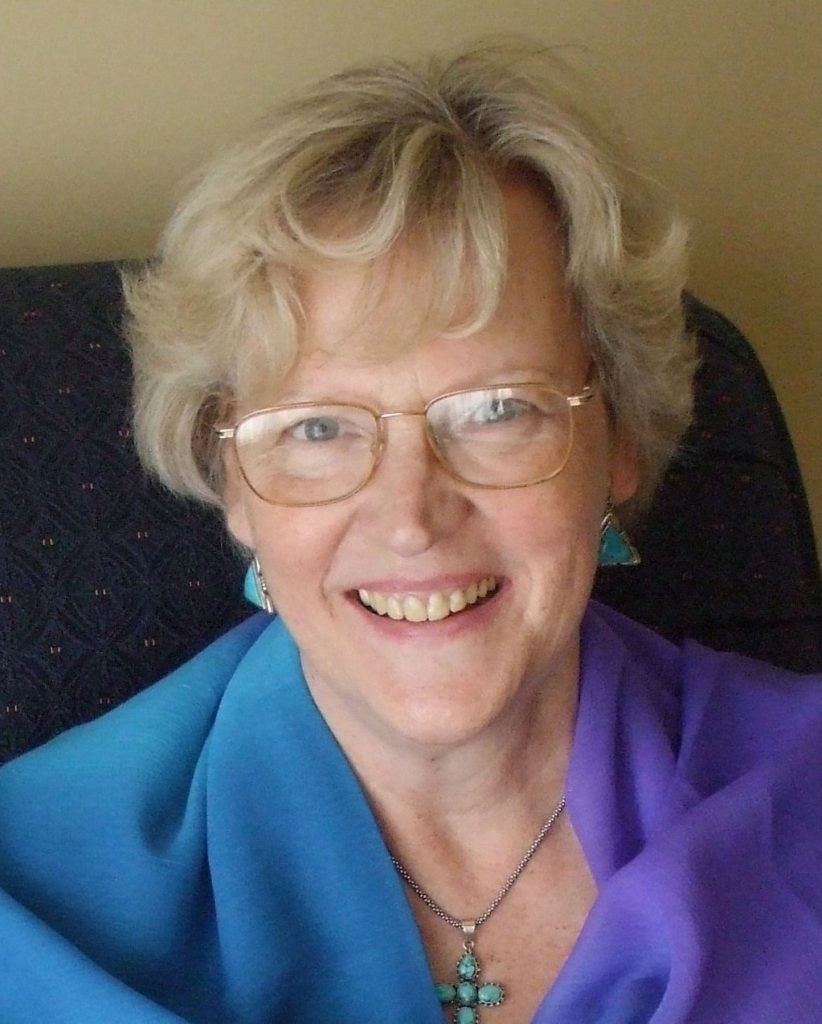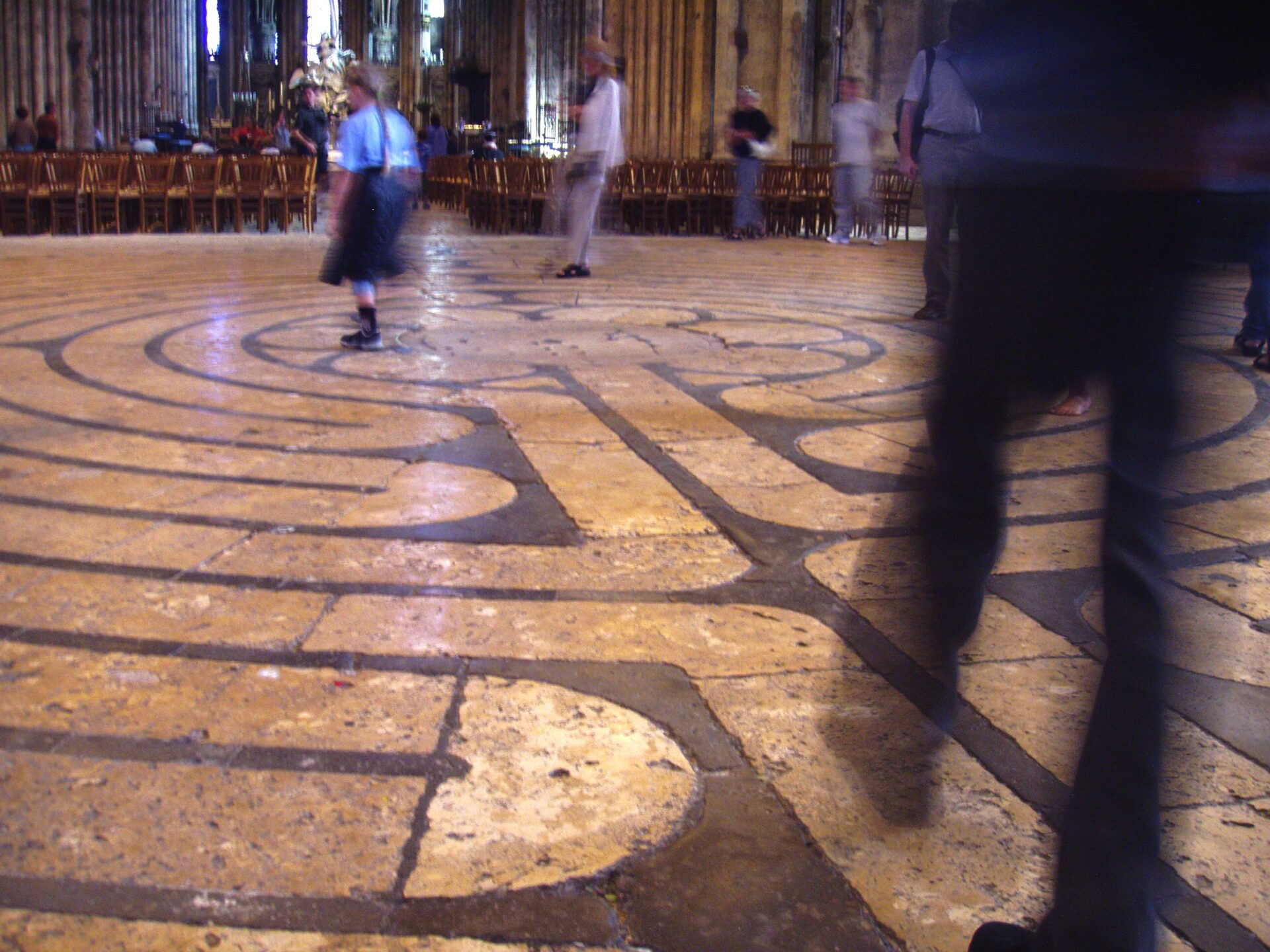As you enter the great 13th century Cathedral of Chartres through the west door you find yourself walking onto and into the Pilgrim’s Labyrinth. The Labyrinth is drawn in black stone on the floor of the nave of the Cathedral under the Rose Window, whose diameter it reflects exactly. During the Middle Ages poor pilgrims, who were unable to go to Jerusalem, would make a symbolic `pilgrimage’ on their knees around all the twists and turns of the labyrinth in their own cathedral. In Chartres, as in many European Cathedrals where similar designs were once to be found, this spiritual mandala acquired great meaning in the devotion of the laity. Many generations experienced the joy of arriving at the center of the labyrinth after many doubts and hesitations.
If you trace the diagram of the labyrinth with your finger you will begin to understand why John Main considered meditation not merely a method of prayer but a pilgrimage and a way of life. Making the pilgrimage of the labyrinth with devotion, like meditation, illuminates the journey of our life. All the loops and backtracks of the labyrinth help put our times of acedia and apatheia, turbulence and peace, in the perspective of the overall design of the journey.
We begin at the beginning. Every human journey, even a spiritual one that transcends time and space, has a definite beginning. We are not far from the center even at the beginning, but we have a journey to make, a process of realization and self-discovery before we can find ourselves to be, in fact, already and always at the center. At the outset it seems we will get to the center on a straight run but we soon encounter the recurrent patterns of loops and bends that test and deepen our faith. They can make it seem we are losing ground, turning back; and after years of meditation we can think we have made no progress, except in the maturing of our faith, which is the essential meaning of spiritual growth. This same faith then shows us that the twists and turns of the journey are not a difficult God’s way of making life more difficult, but a compassionate and wise teacher’s way of untying the knots of our heart.
The labyrinth shows us the wisdom of not trying to measure our progress: precisely because the journey is not linear and mental but cyclical and spiritual, like the coils of a spring. All that matters is the confidence of knowing we are on the way. The path to the center is a narrow one but it leads to the source of life. Life is eternal at its source. We have only to stay on the path. If we try to cheat and jump over from where we are to where we want to be without going the way we must go, we get lost and confused. But at any point we can start again. The ever-present compassion of God is experienced most directly in the constancy of the way and in the ultimate discovery, at the center, of the meaning of the journey we have made. We have only to keep moving forward in faith. Whoever seeks will find.
Meditation is a way. It is, first of all, a way of experience rather than of thought or imagination. Even a symbol such as the labyrinth points to this. A symbol such as the Pilgrim’s Labyrinth of Chartres, though rich in meaning, is only truly understood when it is seen to point beyond itself and out of the world of signs altogether. Looking at an illustration of the labyrinth and tracing the journey to the center with your finger is very different from doing it in reality on your knees. How different then is the daily practice of meditation from merely reading or talking about it.
Photo by Mick Haupt on Unsplash





